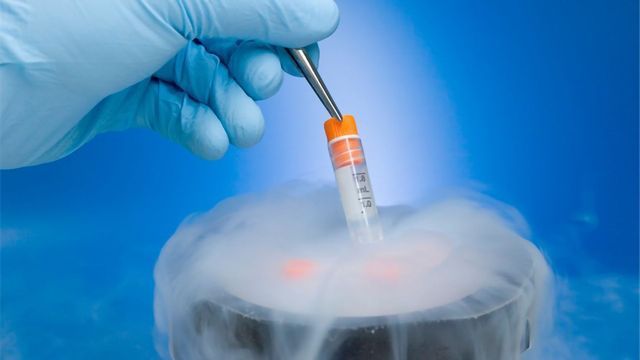
Cryopreservation: the art of freezing life
Cryopreservation is the process of preserve living samples by cooling them to a very low temperature. Cryopreservation plays a crucial role in basic research as well as clinical applications. For instance, cells and other viable tissues cannot be stored for a longer period of time by simply cooling or freezing them because ice crystals and osmotic shocks during freezing and thawing can damage the cell membrane and cause cell death (1).
A short history of cryopreservation
While many tend to think of cryopreservation as a fairly new technology, it actually dates back to the eighteenth century when an Italian priest and a biologist made a breakthrough observation of the effect of snow on human sperm (2). They observed that on lowering the temperature, sperm motility was slowed down, but it was reinvigorated on increasing the temperature again. They are also considered as pioneers in animal artificial insemination.
In 1945, Polge and colleagues recorded their first successful freezing of mammalian sperm cells (3). This successful experiment is also associated with the discovery of glycerol as a cryoprotectant by the same team. In 1972, mouse embryo freezing was successfully reported using dimethylsulfoxide (DMSO) as a cryoprotective agent.
Methods of cryopreservation
1. Slow freezing
As the name suggests, slow freezing is the process of progressive cooling down samples over a period of 2-4 hours. It involves the use of less than 1 M of cryoprotective agents such as glycerol or DMSO with minimum toxicity. The main advantages of the slow freezing method are the low contamination risk and that it does not need highly skilled technicians. However, it is time-consuming and expensive (4).
2. Vitrification
Rapid freezing or vitrification is an ultrarapid method of cooling enabling the storage of cells at cryogenic temperatures while avoiding ice crystals formation. It is the most preferred protocol for embryo and cell freezing. The method involves cooling the samples using liquid nitrogen after exposing them to high concentrations of cryoprotective agents with subsequent rapid cooling to avoid ice nucleation.
The main advantage of this technique is that it is cost-efficient and saves time. However, for successful vitrification, it is important to consider optimizing the concentration and type of the cryoprotectant being used, sample thickness, and cooling/warming rates (5).
References
1. Jang TH, Park SC, Yang JH, Kim JY, Seok JH, Park US, Choi CW, Lee SR, Han J. Cryopreservation and its clinical applications. Integr Med Res. 2017 Mar;6(1):12-18. doi: 10.1016/j.imr.2016.12.001. Epub 2017 Jan 10. PMID: 28462139; PMCID: PMC5395684.
2. Sztein JM, Takeo T, Nakagata N. History of cryobiology, with special emphasis on evolution of mouse sperm cryopreservation. Cryobiology. 2018 Jun;82:57-63. doi: 10.1016/j.cryobiol.2018.04.008. Epub 2018 Apr 13. PMID: 29660317.
3. Polge C, Smith AU, Parkes A. Revival of spermatozoa after vitrification and dehydration at low temperatures. Nature. 1949;164:666. DOI: 10.1038/164666a0
4. Thompson M, Nemits M, Ehrhardt R. Rate-controlled cryopreservation and thawing of mammalian cells. Protocol Exchange. 2011. DOI: 10.1038/protex.2011.224
5. Day JG, Stacey GN. Gefriertrocknen. Cryopreservation and freeze-drying protocols. FEBS Letters. 2007;377(2):281-282. Available from: https://link.springer.com/book/10.1007/978-1-59745-362-2



